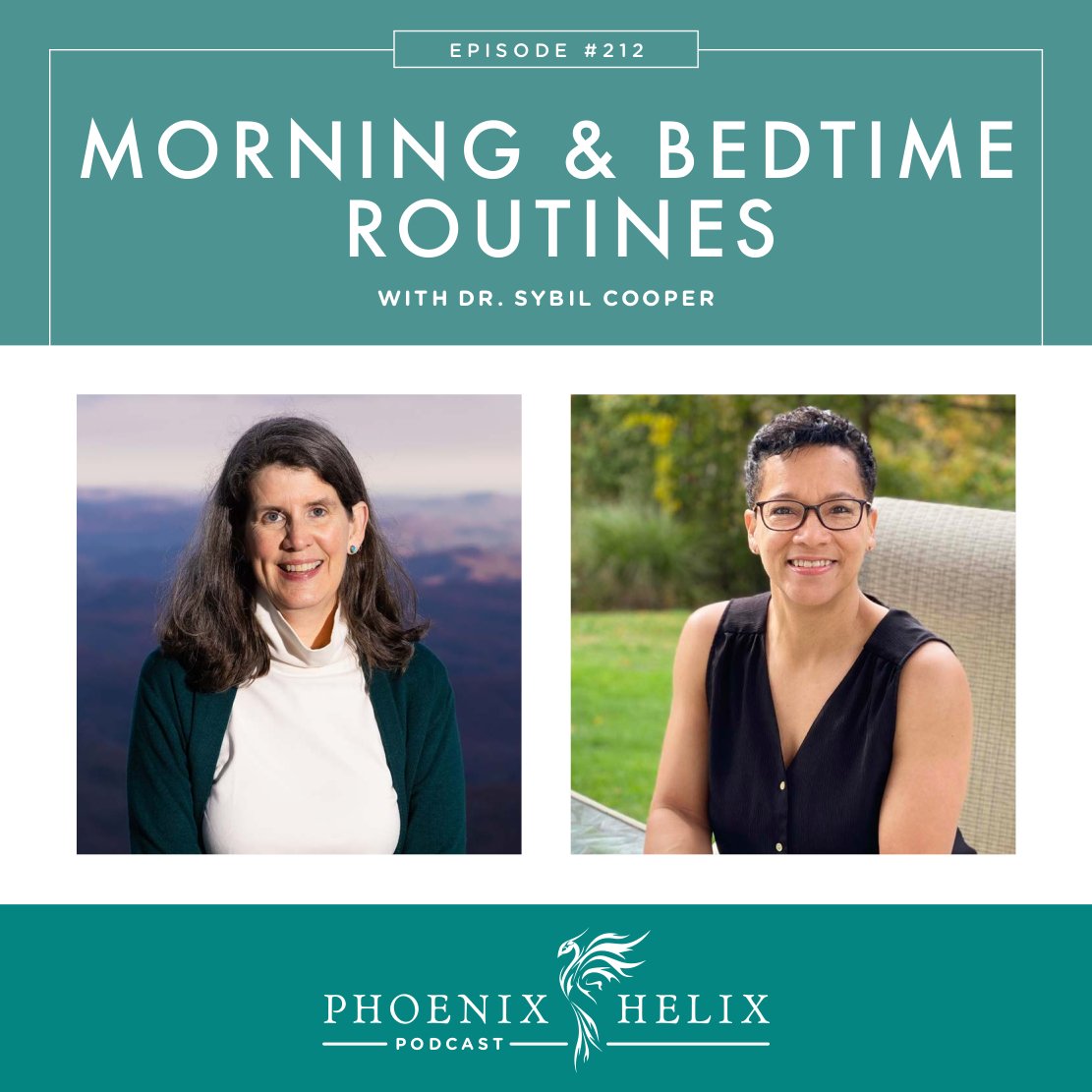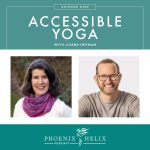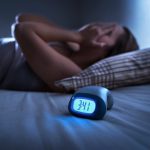AM & PM Routines That Improve Sleep!
Morning and bedtime routines are a wonderful way to bookend your day, starting and ending it with some joy and self-care. They can also make a big difference in the quality of your sleep. So in today’s podcast, we do a deep dive into the science of circadian rhythms and learn how to create morning and bedtime routines that support autoimmune health. My guest is Dr. Sybil Cooper. She is both an autoimmune warrior and an immunologist. She has a deep understanding of the immune system both personally and professionally. She’s also a health and nutrition coach who helps people create new habits to thrive.
Listen to the Show
- Subscribe to my podcast through your favorite podcast app: iTunes, Stitcher, Google, TuneIn, Spotify, Amazon, etc.
- You can also listen to the episode right here through the player below, and if you subscribe to my newsletter you’ll get notified of future episodes.
Podcast: Play in new window | Download
Show Notes
- Intro (0:00)
- Thank You to Our Podcast Sponsor – Functional Nutrition Alliance (2:38)
- Full Body Systems is their internationally acclaimed, 10-month online functional nutrition immersion training program.
- It’s designed by world-renowned educator, Andrea Nakayama. Many of you know her as one of my most popular podcast guests. Her unique way of working with patients often leads to results where other practitioners hit dead ends. This program teaches you to do the same.
- If you’re already trained as a health coach, nutritionist, or medical practitioner and want to more effectively help your clients break through healing plateaus, this class is for you!
- And if you’re an aspiring practitioner just getting started, this might be the only training you need.
- You’ll gain detailed knowledge of all the systems in the body, how they interact, how problems develop, and how to personalize diet and lifestyle recommendations for each unique client.
- Enrollment is currently open. To learn more, visit FxNutrition.com/Eileen.
- Sybil’s Personal Autoimmune Story (4:05)
- Dr. Sybil Cooper has multiple autoimmune diseases herself, including Sjogren’s syndrome, myasthenia gravis (MG), and mixed connective tissue disease (MCTD).
- Sjogren’s was her first diagnosis, and it’s an autoimmune disease that attacks the moisture glands of the body. Her symptoms included dry eyes, dry mouth, fatigue, and brain fog. She experienced her first symptoms in her 30’s and they progressed into her 40’s before she was diagnosed. It was actually an eye doctor who spotted it and referred her to a rheumatologist. Because the onset was slow, it was easy to dismiss her symptoms as signs of “aging”.
- The onset of myasthenia gravis was faster and more debilitating. Sybil was an athlete accustomed to running, lifting weights, and competing in Spartan Races. Suddenly, she found herself unable to get up from the floor, unable to hold her head up while sitting on the couch, and unable to walk up a flight of stairs without using her arms to support her legs. MG interferes with communication between the nerves and muscles. She was referred to a neurologist and was diagnosed very quickly.
- MCTD is her most recent diagnosis. She experienced blood vessel inflammation that caused painful lesions on her legs, along with eye swelling that caused temporary vision loss.
- Over the past decade with autoimmune disease, Sybil has done a lot of experimentation to discover many of her own flare triggers. She’s experienced long periods of remission, mixed with periods of increased symptoms. Sleep, stress management, and diet are all essential. She approached diet in baby steps and learned that gluten, dairy, tapioca, and processed foods are her biggest food triggers.
- Most recently, she learned of the hormone connection with her MCTD symptoms which always appeared on a cycle of 4-8 weeks. Progesterone therapy has recently put her MCTD into remission and allowed her to wean off methotrexate (an immunosuppressant). She also takes Mestinon as needed, which is a medication that helps with MG symptoms.
- Sybil’s Professional Immunology Background (17:07)
- Professionally, Sybil fell in love with science as a child and ended up studying immunology in graduate school, long before she developed autoimmune disease herself. She ended up doing some groundbreaking research on the TNF inflammation pathway that’s involved in autoimmune disease, and that research was pivotal to the development of biologic medications that target this pathway.
- Now that she has autoimmune disease herself, she’s very interested in the impact of things like sleep, stress management, and nutrition on the immune system. She’s become a health and nutrition coach, helping clients create new habits to thrive.
- The Science of Circadian Rhythms (20:14)
- Our body has an internal clock that’s governed by sunlight. When the blue light of the sun’s rays hits the photo receptors in our eyes, that sends a signal to the brain that it’s daytime, and the brain releases signals throughout the body to establish the circadian rhythm for the day. Almost every process in our body happens on a rhythm set by that clock.
- Two hormones that are released after exposure to sunlight are cortisol and serotonin. Cortisol wakes us up and gives us energy for the day. Serotonin is a feel-good hormone. In the evening, cortisol levels drop, helping us relax to prepare for sleep, and serotonin gets converted into melatonin, the sleep hormone.
- In ancestral times, we spent most of our day and evening outside, making it very easy to have balanced circadian rhythms. In modern times, we spend most of our day and evening indoors, and it’s easy for circadian rhythms to get out of balance. If you’ve ever gone camping and had the best sleep of your life, this is one of the reasons why.
- Morning and bedtime routines are a wonderful way to set ourselves up for a good night’s sleep. If we start the day by stepping outside and exposing our eyes to sunlight, we’ve reset our circadian clock for the morning. In the evening, be aware that blue light from our devices might stimulate wakefulness. While this light isn’t as strong as sunlight, it can still impact circadian rhythms by preventing the conversion of serotonin to melatonin. Everyone has a different sensitivity to light, so this impacts some people more than others. If you struggle with insomnia, consider wearing amber glasses in the evening and/or turning your devices off an hour before bed to help foster relaxation and sleep.
- Circadian Rhythms & Health (29:05)
- Because imbalanced circadian rhythms can disrupt sleep, and sleep is foundational to health, this can interfere with healthy function of the body overall.
- We call melatonin a sleep hormone, but it serves many other roles. It’s a powerful antioxidant and anti-inflammatory. It improves insulin sensitivity. It also supports thyroid function and immune system function. When we put this all together, it’s not surprising that circadian imbalances and sleep problems can cause autoimmune flares.
- There are also many important functions our body does while we sleep, especially in the brain. The brain has something called the glymphatic system, and when we sleep, the brain shrinks slightly to allow greater fluid accumulation to flush out the metabolic waste from the day’s activities. If this doesn’t happen, the brain can’t function optimally. Chronic insomnia increases the risk of anxiety and depression. It may also increase risk for Parkinson’s and Alzheimer’s later in life.
- Important communication within the immune system happens when we sleep too.
- Thank You to Our Podcast Sponsor – Captain Soup (34:03)
- Captain Soup sells nutrient-dense freezer meals, designed specifically to enable the body’s healing. They only use the highest quality ingredients including locally sourced, 100% grass-fed and finished meats, wild-caught seafood, 100% organic vegetables, and bone broth made in-house from the bones and organ meat from the best grass-fed lamb in the world.
- They sell 7 flavors of soup which are paleo, keto, and Wahls protocol-compliant. 5 of those flavors also fit the elimination phase of the Paleo Autoimmune Protocol. 4 of the flavors are Low-FODMAP. And 2 flavors are GAPS-compliant.
- Here are the flavors: Classic Lamb, Dijon Lamb, Italian Beef, Classic Beef, Dijon Beef, Green Machine & Tom Kha. (Tom Kha is a seafood soup that’s available in-season.) They also have the full ingredient list for every flavor on their website.
- You can buy pre-selected variety packs or build your own custom box. They also have a nutrient-dense liver pâté that can be substituted for any soup upon request.
- Order today and get nutrient density delivered to your doorstep! Use the code PHOENIX to save $25 off your first order.
- Morning Larks, Night Owls, and Hummingbirds (35:46)
- How would you classify yourself? Some people love waking up early, some enjoy staying up late, and some are in the middle.
- There are actually genes that may influence your preference, including the Per3 Clock Gene and the ADA Gene.
- Caffeine can also influence your preference which is a blend of genetics and lifestyle. Some people metabolize caffeine quickly, while others metabolize it slowly. Slow metabolizers are more likely to stay up late and have trouble getting up in the morning.
- Within all of these tendencies, balancing our circadian rhythms helps us get restorative sleep. It may also give us flexibility about our natural bedtime and waketime, so we aren’t purely driven by our genes.
- Resource: Chronotypes.
- Building Routines in Baby Steps (39:49)
- Morning and bedtime routines don’t need to be long to be beneficial. So, we’ll be sharing quick ideas to get started, and if you want to layer in more healthy habits over time, you’re welcome to do so, but it’s not required.
- Routines are also very personal. Don’t compare your routine to anyone else’s. Experiment to find what works best for you.
- 5 Minute Morning Routines (40:57)
- Step outside for a few minutes and expose your eyes to sunlight. Even on a cloudy day, this has more circadian impact than any indoor light.
- If getting outside isn’t possible, standing next to a bright window is the next best thing.
- There are also sun lamps that can help train circadian rhythms and also boost energy and mood. They can be especially helpful in the winter or on dark, rainy days. Eileen uses a Verilux HappyLight.
- You can also layer in one more activity during your morning routine at the same time that you’re exposing your eyes to light. Some examples are morning meditations, affirmations, breathing techniques, yoga, or spending time with your pet. All of these support your health and start your day in a beautiful way without taking a lot of time. 5 minutes is beneficial.
- Another option is a simple “open your senses” exercise. Leave your phone inside, and as you take in the sunlight, pay attention to the sights, sounds, smells, and sensations all around you. Too often, we reach for the phone first thing in the morning, and it often triggers anxiety that stays high the rest of the day. This simple “tune into your senses” exercise has been shown to reduce anxiety. It’s a very grounding experience, and it’s something we rarely experience in modern life.
- Lastly, our body is 60% water so starting the day with hydration is important. Our health depends on it, and water can be incorporated into any morning routine, no matter how short.
- Longer Morning Routines (47:23)
- You can build a longer routine in baby steps, lengthening a practice you’re already doing, or adding new elements one at a time. Everything we suggested in the short routines above can be included in a longer morning routine.
- A longer meditation Sybil loves (that isn’t too long) is Ziva Meditation. Some longer meditations Eileen enjoys are Body Scan and Loving Kindness.
- Journaling can be a wonderful way to start the day. There’s even an exercise called Morning Pages that’s very popular. I also have a podcast with other ideas, including visual journaling if you’re not a writer: The Healing Power of Journaling.
- In fact, any creative work is wonderful to include in a morning routine, particularly if you’re a morning person.
- If you love to read but struggle to find the time, consider adding that to your morning routine.
- Exercise is another great choice. With autoimmune disease, that can be challenging sometimes but I have lots of resources to help: Exercise series.
- If you live in a busy household and rarely get solitude, taking a few minutes to yourself in the morning can be restorative.
- Finally, Sybil recommends putting a note for yourself in the bathroom listing out the steps of your morning routine, until it becomes a habit that’s easy to remember. Decision fatigue is real and it builds up over the course of a day. We don’t want to waste that mental energy in the morning when more important decisions are needed later in the day.
- Thank You to Our Podcast Sponsor – Luminance Skincare (52:06)
- For many people, skincare is an important part of their morning and bedtime routine, and Luminance Skincare is the cleanest skincare anywhere!
- Today I want to highlight their bestselling facecare trio, which includes their Delicate Cleanser, Rosewater Toner, and Deep Hydration Moisturizer. Each one of these products has over 500 five-star reviews on their website. And they have a sample kit, so you can try it yourself! The Delicate Cleanser gently and deeply cleanses your skin without drying it out. The Rosewater Toner perfectly adjusts and balances the pH of your skin. The Deep Hydration Moisturizer mimics skin’s natural oils to soothe dry skin while maintaining a clear complexion.
- Whereas conventional skincare products are full of chemicals that can hurt our bodies, Luminance is made from ingredients that nourish. Their products are natural, organic, wildcrafted, non-GMO, and gluten-free (and they’re even made in a dedicated gluten-free facility). It’s the cleanest skincare anywhere! And everything is handmade in small batches within the United States.
- They have a complete face and body care line, including cleansers, toners, moisturizers, masks, acne serum, lip balms, haircare, sunscreen, handcrafted soaps, and more.
- Order their sample kit today, and once you fall in love and want to order full-size bottles, use the code HELIX for 10% off your order. (You can also use the HELIX coupon on any Luminance product, not just the facecare trio.)
- 5 Minute Bedtime Routines (53:51)
- Turn the lights down in your home, and turn the sound down a little as well. This lets your mind and body know that sleep is coming.
- Gratitude is a wonderful bedtime practice. You simply reflect on your day and think of three things for which you feel grateful. You can write them down in a journal before going to bed, or you can actually do this practice in bed by simply “counting your blessings” before you go to sleep. It trains your mind to look for positive things, even during stressful times, and replaces worry at bedtime with joy instead.
- Deep breathing can also aid the transition to sleep. There’s even a breath that’s famous for helping people with insomnia: 4-7-8 breath.
- Sybil loves doing progressive muscle relaxation in bed. You slowly tense and then relax each individual part of your body. She usually falls asleep before she’s done.
- Also consider keeping your phone out of the bedroom, so you’re not tempted to use it while in bed or first thing in the morning.
- Longer Bedtime Routines (58:17)
- Considering putting your devices away 30-60 minutes before bed so you don’t interfere with melatonin conversion. Transition to activities that don’t involve the computer.
- Showering before bed can enhance deep sleep. Our body temperature drops at night, and that triggers the transition to deep sleep. If we take a warm shower before bed, our body works to quickly reduce our body temp and overshoots, getting us into deep sleep faster. But Sybil also likes ending her shower with 30-60 seconds of cold water, and that has benefits as well. Be aware that different autoimmune diseases may have heat or cold intolerance, so listen to your body and experiment to find the shower temperature your body likes best.
- An Epsom salt bath before bed is Eileen’s favorite. It helps support the body’s detox pathways while also relaxing your body for a good night’s sleep. If you don’t like full-body baths or don’t have a big bathtub, an Epsom salt foot soak works too.
- Bedtime stories aren’t just for kids. Choose a book that’s entertaining but also relaxing – one that you can put down when you get tired (not a gripping page turner).
- TV can be a form of bedtime story as well. As long as the TV is across the room rather than on a device that’s close to your face, the blue light impact is less. And if you wear amber glasses, that can help too. Again, choose a relaxing show. Reruns are a great choice for bedtime stories.
- List making can help with night-time ruminations. Write down your to-do list for tomorrow, rather than trying to hold it in your head. Similarly, you can write down your worries and let them go for tonight.
- Meditation before bed can help with relaxation and most meditation apps have sleep meditations.
- Gentle stretching can also help relax your body for sleep.
- Lastly, paper-based creativity can be a fun bedtime ritual: coloring books, zentangles, sudoku.
- Healing Mindset: A Guide to the Mind-Body Connection for People with Autoimmune Disease (1:02:51)
- Written by Eileen, the book contains over 90 techniques that can be incorporated into any morning or bedtime routine. You can experiment to find favorites, or simply flip the book open to any page and try the practice listed.
- Learn more here.
- Outro (1:03:12)
- Connect with Dr. Sybil Cooper through her website or Instagram. She does 1:1 wellness coaching. She also offers community autoimmune coaching through the program, WellTheory.
- Eileen (your podcast host) is the author of multiple books, written to help people thrive with autoimmune disease. Learn more on the Books Page.
- If you like this podcast, follow or subscribe through your favorite podcast app. You can also subscribe to Eileen’s biweekly newsletter.
- Check out the entire archive of podcast episodes.
You May Also Be Interested In
Spreading the Word
If you like the podcast, please leave a positive review in iTunes. It would mean the world to me, and also helps others find the podcast. Here are some quick instructions using your iPhone:
- If you are already subscribed to my podcast: (1) Click the purple podcast icon. (2) At the bottom of the screen, click Library. (3) At the top of the screen, click Shows. (4) Click the Phoenix Helix podcast image. (5) Scroll down the page, and you’ll see Ratings and Reviews. Scroll down a little bit more and click on Write a Review. This will bring up the review screen. Tap 5 stars (if you love the podcast), and then click in the title box, and it will bring up the keyboard. Enter a title and short review. (6) Click Send in the upper right corner. (7) Thank you! Positive reviews give the podcast a higher search ranking in iTunes, helping people find it and letting them know it’s a quality podcast and worth their time to listen.
- If you haven’t subscribed to my podcast: (1) Click the purple podcast icon. (2) In the lower right corner, click the magnifying class. (3) Type Phoenix Helix in the search box. (4) Click the podcast cover in the Show list. (5) If you’d like to subscribe, click the + sign at the top of the screen. (6) To write a review, scroll down the page, and you’ll see Ratings and Reviews. Scroll down a little bit more and click on Write a Review. This will bring up the review screen. Tap 5 stars (if you love the podcast), and then click in the title box, and it will bring up the keyboard. Enter a title and short review. (7) Click Send in the upper right corner. (8) Thank you! Positive reviews give the podcast a higher search ranking in iTunes, helping people find it and letting them know it’s a quality podcast and worth their time to listen.








